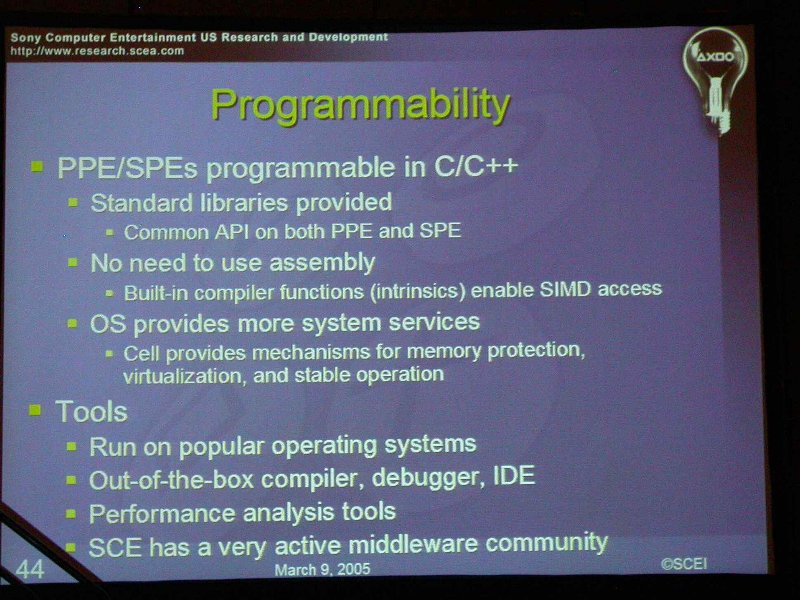On the hardware side, I have a pretty good understanding of what Cell is all about and how it is working, but I feel I am lacking some understanding of how the puzzle will come together on the software side, and I haven't seen much discussion of this, so...how and what will harness specifically the SPEs in Cell? In terms of games?
We're told it's a wonderful chip for games consoles, if not anything else. We're told the SPEs are "general" processors. So what kind of game code will be "accelerated" (for want of a better word) by finding a home on a SPE?
I'm thinking anything that relies heavily on floating point performance, but in a game, what would that be?
Graphics aside, I'm guessing Physics, but what else?
I guess I'm asking about Cell programming models, what is needed to maximise performance, and what kind of game code lends itself to such models? For example, do you need to use a streaming/pipeline model to maximise performance, or can the SPEs be as busy with more general multitasking (that utlises all the SPEs for different tasks)?
We're told it's a wonderful chip for games consoles, if not anything else. We're told the SPEs are "general" processors. So what kind of game code will be "accelerated" (for want of a better word) by finding a home on a SPE?
I'm thinking anything that relies heavily on floating point performance, but in a game, what would that be?
Graphics aside, I'm guessing Physics, but what else?
I guess I'm asking about Cell programming models, what is needed to maximise performance, and what kind of game code lends itself to such models? For example, do you need to use a streaming/pipeline model to maximise performance, or can the SPEs be as busy with more general multitasking (that utlises all the SPEs for different tasks)?

